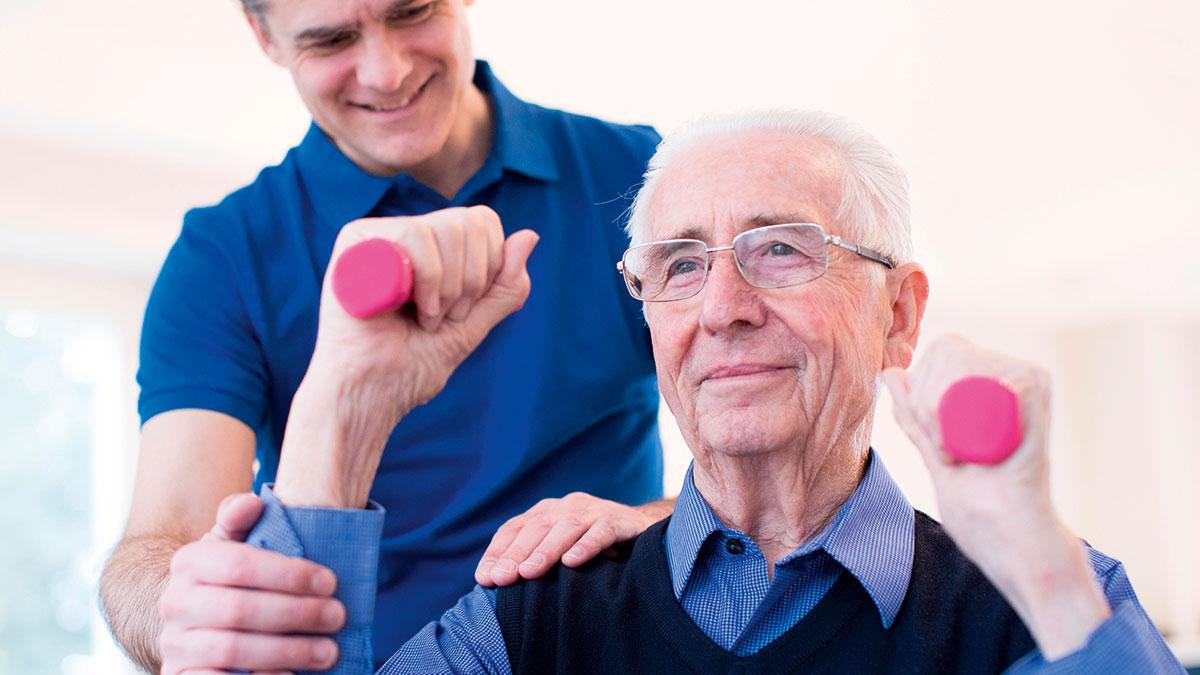In the first of our regular series from the National Institute for Health Research, we look at stroke.

Why was this study needed?
What did this study do?
What did it find?
- The Berg Balance Scale: mean difference (MD) 2.22 points, 95 per cent confidence interval (CI) 1.26 to 3.17 (28 trials, 985 participants). The scale is a 56 point scale and an eight-point change is considered an important difference.
- The Functional Reach Test: MD 3.12 cm, 95 per cent CI 0.90 to 5.35 (five trials, 153 participants).
- The Sensory Organisation Test: MD 6.77 per cent, 95 per cent CI 0.83 to 12.7 (four trials, 173 participants).
- Exercise therapy had no significant effect on Postural Sway Velocity in three studies measuring this outcome (89 people).
- One to five months after the exercise therapy intervention, significant improvements were still seen on the Berg Balance Scale (MD 1.65 points, 95 per cent CI 0.22 to 3.07; eight trials, 338 participants) and Sensory Organisation Test (MD 3.91 per cent, 95 per cent CI 0.10 to 7.73; 3 trials, 151 participants).
- Looking at the type of exercise therapy, significant improvements on the Berg Balance Scale were seen immediately after balance and/or weight shift training (3.75 points, 95 per cent CI 1.71 to 5.78) and gait training (2.26 points, 95 per cent CI 0.94 to 3.58) but not after multisensory training or high intensity aerobic training. Intensity of training had no effect on Berg Balance Scale improvement.
What does current guidance say?
- ankle foot orthoses;
- individualised interventions;
- gait-orientated physical fitness training;
- muscle strength training; and
- increased intensity of rehabilitation.
What are the implications?
Funding
Further information
- ‘Exercise therapy may still improve balance when started a long time after a stroke’ was published on 15 November 2016 by the NIHR Dissemination Centre.
- The full NIHR Signal and additional expert commentary can be found here.
Commentary: Dr Jacqui Morris gives her reaction
'The conventional assumption is that the greatest potential for recovery after stroke is during the first few months after onset. This high quality review challenges that assumption, showing that task-specific exercise therapy may improve balance capacity late after stroke onset. Good balance is critical for walking and undertaking activities independently and safely. Improving balance may therefore reduce falls and prevent unnecessary hospital admissions, and their detrimental consequences for quality of life and confidence of people with stroke.
'However therapy services are typically not set up to routinely deliver such therapy six months and more after stroke. Innovative approaches to delivering this training must be developed, alongside cost-effectiveness studies showing the value of investment in such services. The task-specific nature of effective balance training means it should be orientated towards tasks that people undertake in everyday life. Working with stroke survivors and their families to find ways to empower them to safely build balance-specific training into their daily routines and activities would provide a person-centred approach likely to promote adherence.
'Technological solutions, such as gaming, mobile technology applications and tele-rehabilitation systems that people can use at home, may also be effective for supporting and monitoring engagement in therapy and for provision of remote feedback. These solutions should be developed more fully and evaluated. Time to train therapists to deliver tailored task-training through technology?'
- Dr Jacqui Morris (Grad Dip Phys, MSc, PhD) is reader in rehabilitation research, School of Nursing and Health Sciences, University of Dundee
Author
Dr Jacqui Morris (Grad Dip Phys, MSc, PhD) is reader in rehabilitation research, School of Nursing and Health Sciences, University of DundeeNumber of subscribers: 1




































